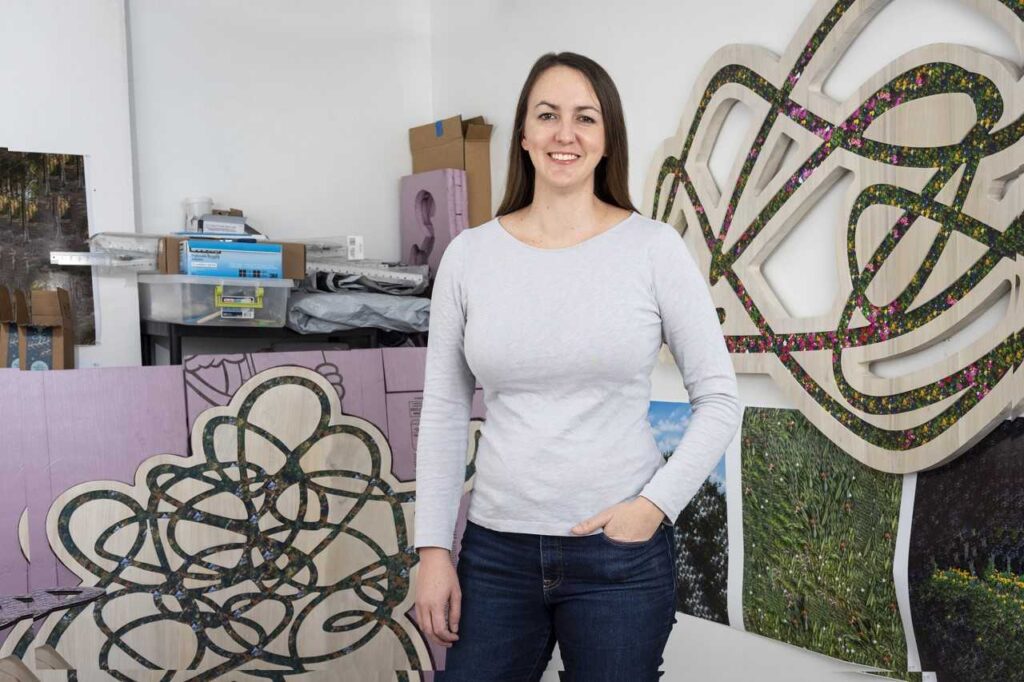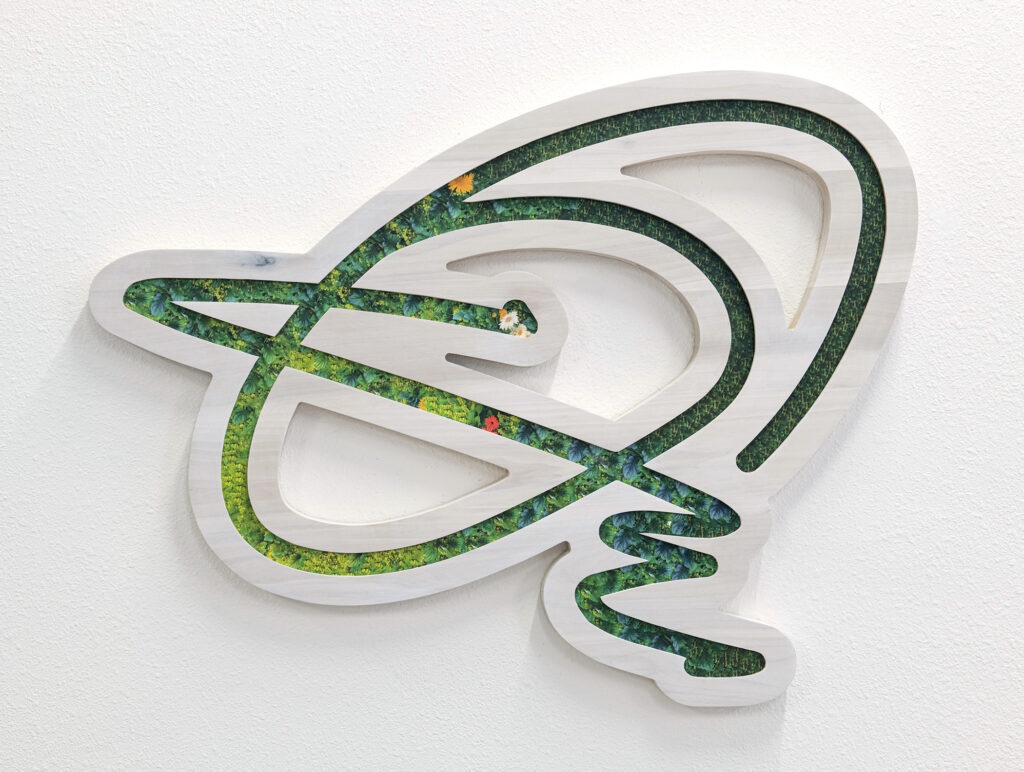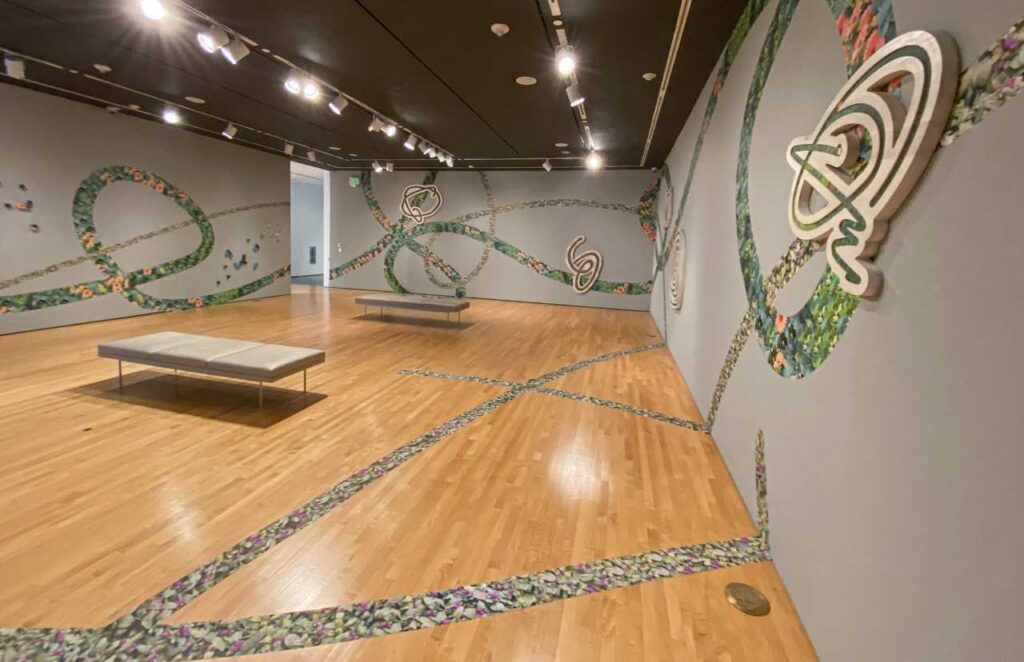
Kalee Appleton, an assistant professor at the School of Art.
The Shaping the Arts series highlights TCU College of Fine Arts faculty and alums who are at the forefront of their field and Lead On creatively.
“After taking my first art course in college, I had to pursue a creative path,” said Kalee Appleton. “I knew I would regret it later in life if I didn’t follow through.”
Appleton, an assistant professor at the School of Art, uses her work to explore digital technology’s lasting impact on society. Her recent exhibition at the Hilliard Art Museum in Lafayette, LA, explores this topic through a new perspective.
Society Through a Digital Lens
“I began thinking about how digital technology affects our lives around the time I learned photography,” said Appleton.

Artwork from Appleton’s exhibition at the Hilliard Art Museum. Photo provided by Appleton
While studying photography as an undergraduate, a new era began as the industry radically shifted from film to digital. The introduction of digital photography radically altered the traditional understanding and methods of using this medium.
“Learning photography when it completely transformed spurred me to consider the ramifications more seriously,” said Appleton.
After graduation, Appleton became a corporate and aviation photographer and observed the industries’ rapid shift to an online existence. Appleton’s artwork explored the dramatic and chaotic move toward digital technology and the disruption it created in existing frameworks and operations.
“What I created decades ago continues to foretell the ever-increasing sense of anxiety created by digital technologies like social media.”

Appleton’s exhibition at the Hilliard Art Museum. Photo provided by Appleton
Her recent exhibition explores the broad topic of digital technology through software manipulation. Appleton duplicated details in each landscape image to create an exaggerated color texture and allude to the historical beginnings of landscape photography. The jarring repetition reflects the persistent presence of digital mediums and the heightened emotional tolls created from daily use.
“The artwork is about the medium of photography and how it acts as a mirror of reality.”
Q&A with Kalee Appleton
Describe your first experience with photography and how you decided to pursue it as your profession.
When I began college, I was a business major. I didn’t know that being an artist was an option. I didn’t even know contemporary artists existed until I took art classes.
Photography wasn’t necessarily my pursuit, though I love it; instead, it was art in general. Photography is the avenue in which I make art, but I also make artwork that combines different media types.
What was your process for creating your exhibition at the Hilliard Art Museum?
I photographed floral elements to create a variety of colors and shapes within each image. The colors and shapes dictated the imagery that I took for each piece.
What is important is the imagery manipulation with software. Each image is falsified by having Adobe Photoshop duplicate the details of the image over and over.
What advice would you give to aspiring photographers?
Anyone pursuing a creative path must invest in their goals. Hustle culture is a hot topic and is associated with negativity, but to be honest, you must work extremely hard to succeed in a creative field. Actively chip away at the necessary steps to achieve your goals.
Have resilience. Understand that life has setbacks, but you can never stop working if you are going to succeed. Make friends who are also creative and learn from them. Be curious and kind. Never stop learning, and strive to be a better version of yourself.
